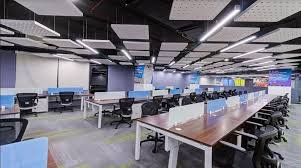The way we work has changed dramatically in recent years. The traditional office, once the center of corporate life, is no longer a necessity for many businesses. As companies embrace hybrid work models, where employees split their time between remote work and physical offices, real estate investors, developers, and business leaders are rethinking the role of office spaces.
Hamad Al Wazzan, a forward-thinking expert in commercial real estate, sees this shift as both a challenge and an opportunity. “We are witnessing one of the biggest transformations in workspace design,” he explains. “Office spaces are no longer just about desks and meeting rooms. They need to offer flexibility, efficiency, and a sense of purpose for employees who now have the choice to work remotely.”
The New Purpose of Office Spaces
Before the pandemic, the office was a given. Employees commuted daily, sat at designated desks, and attended in-person meetings. Today, that model is evolving into something more fluid. Employees no longer see the office as just a place to work, it’s a place to collaborate, innovate, and engage.
Hamad Al Wazzan believes companies that rethink their office spaces with this in mind will gain a competitive advantage. “If employees can be productive at home, they need a compelling reason to come to the office,” he says. “That reason isn’t just about getting work done, it’s about connection, creativity, and access to tools and environments that make collaboration better.”
Companies that are thriving in the hybrid era have redesigned their spaces to serve specific purposes, such as:
- Collaboration Hubs – Offices that focus on meeting spaces, brainstorming rooms, and technology-enabled areas that encourage teamwork.
- Flexible Hot-Desking – Employees no longer have assigned desks, but instead, reserve workspaces as needed.
- Wellness and Social Spaces – Integrating amenities like lounges, fitness centers, and relaxation areas to enhance employee well-being.
How Hybrid Work is Impacting Commercial Real Estate
The demand for traditional office leases is shifting. Many companies are reducing their office footprint, opting for smaller spaces in prime locations rather than sprawling headquarters. Others are seeking flexible lease agreements that allow them to scale up or down depending on workforce needs.
Hamad Al Wazzan sees this shift as a turning point for the commercial real estate market. “Landlords and investors must recognize that long-term leases for large, fixed office spaces may become less common,” he explains. “Instead, companies are looking for adaptable spaces that can evolve with their workforce.”
This trend has led to a rise in co-working spaces and flexible offices. Operators like WeWork and Regus, once seen as alternatives for startups, are now attracting larger enterprises looking for adaptable office solutions. Even traditional landlords are rethinking their business models by offering short-term leases, shared spaces, and pay-as-you-use office solutions.
Another impact of hybrid work is the growing demand for office spaces outside major urban centers. As more employees work remotely, businesses are setting up satellite offices in suburban areas to accommodate those who don’t want long commutes but still need occasional in-person meetings.
Technology’s Role in the Hybrid Office
A successful hybrid work environment isn’t just about space, it’s about technology. Offices now require seamless integration between physical and digital workspaces.
Hamad Al Wazzan emphasizes the importance of smart office technologies that make hybrid work more efficient. Some key innovations shaping the future of office spaces include:
- Touchless Technology – Automated doors, voice-controlled elevators, and motion-sensor lighting to create safer, more seamless environments.
- Advanced Video Conferencing – High-quality virtual meeting setups to improve collaboration between in-office and remote employees.
- AI-Powered Workspace Management – Smart systems that analyze office usage and optimize space allocation.
Hamad believes that companies that invest in these technologies will create more efficient and engaging workplaces, ensuring employees get the most out of their time in the office.
Adapting Office Real Estate for the Future
For real estate developers and investors, the hybrid work model presents both risks and opportunities. Buildings that remain stuck in outdated designs may struggle to attract tenants, while those that adapt to modern workspace needs will thrive.
Hamad Al Wazzan advises commercial real estate players to focus on three main factors:
- Flexibility – Office spaces should be designed with modular layouts that can be reconfigured based on tenant needs.
- Amenities that Matter – High-speed internet, sustainable designs, and wellness features are now critical for attracting companies.
- Location Strategy – Businesses may no longer need large headquarters but will seek strategically placed offices for team gatherings.
He also predicts that mixed-use developments—where office spaces are integrated with retail, residential, and entertainment facilities—will become more attractive. “Companies want environments that offer everything employees need, from workspaces to dining and socializing, all in one location,” he explains.
What Lies Ahead
The shift to hybrid work is not a temporary trend, it’s a fundamental change in how businesses operate. While some companies are still figuring out their long-term strategy, one thing is clear: the future of office spaces is about adaptability.
Hamad Al Wazzan remains optimistic about the transformation. “This is an exciting time for the commercial real estate sector,” he says. “Those who embrace change and innovate will find opportunities where others see challenges.”
As the hybrid work model continues to evolve, one thing is certain, office spaces are no longer just where work happens. They are environments designed to bring people together, foster collaboration, and enhance productivity. Businesses and real estate professionals who recognize this shift will be the ones leading the future of work.
